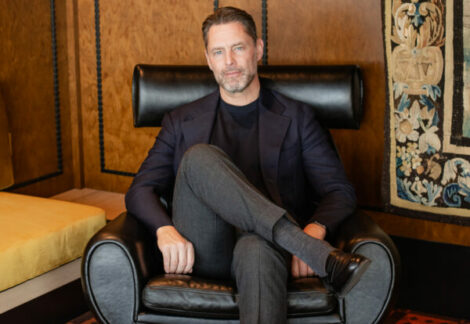Looking out on to the Thames beside the local football club’s stadium, Craven Cottage, Fulham Pier is an impressive six-storey destination that reimagines what a hospitality venue can be. A boutique hotel, wellness space, members’ club, restaurants, live event spaces – and not a football logo in sight.
When the team behind Fulham Pier approached Field Grey, they weren’t just in need of uniforms – they were building entirely new brands from the ground up. From the relaxed but vibey energy of the Riverside Market to the considered luxury of Lighthouse Social members’ club, every space needed a look and feel of its own. Our job was to help them tell those stories through uniform design.
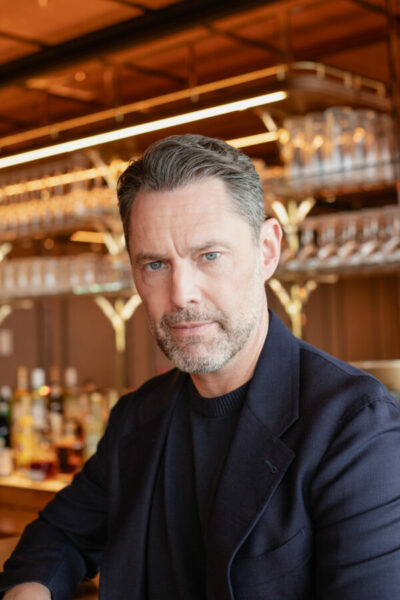
Bringing new brands to life
We worked closely with Glen Sutton, Director at Fulham Pier, to design uniforms that would capture the distinct personalities of each space. Readywear was the perfect choice to deliver the lifestyle collection for areas like the public food halls – with our aprons, cotton shirts and signature neckerchief among the wearable and versatile collection. To elevate the more refined areas, we also created bespoke items like a luxurious black wool doorman’s coat and cap, along with waistcoats for Brasserie Constance.
Here, as Fulham Pier continues to celebrate its opening with a series of summer events and pop-ups, Glen chats to us about the journey so far – and how Field Grey’s uniform designs are integral to shaping the overall experience at Fulham Pier.
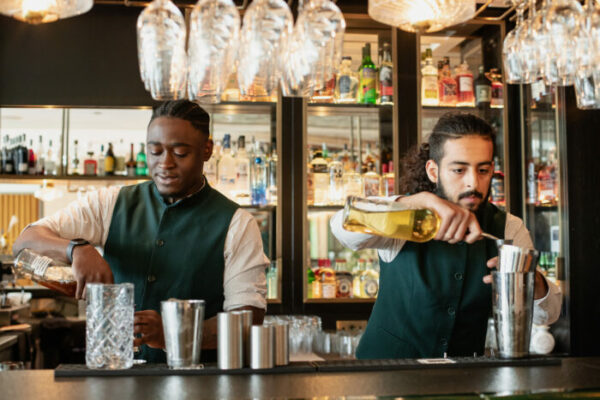
Hi, Glen. How long have you been working on the Fulham Pier project, and what’s your role?
I’ve been involved for about five years, starting as a consultant before joining the board as a director about two and a half years in. So, it’s been half a decade, just in a few different capacities.
What was your brief when you came on board?
The building was already under construction, but the ambition was to activate the space 365 days a year. It wasn’t meant to just serve the football club. You know, 340, days a year it would be something else, and only 20 or so days a year it would be a football club. This building has so much more potential than just match days.
What’s your background, and how did it shape your approach?
I come from luxury hospitality, mostly focusing on strategy and concept design. That means working with culinary and service teams, interior designers and creatives to shape experiences and environments that people actually want to spend time and money in.
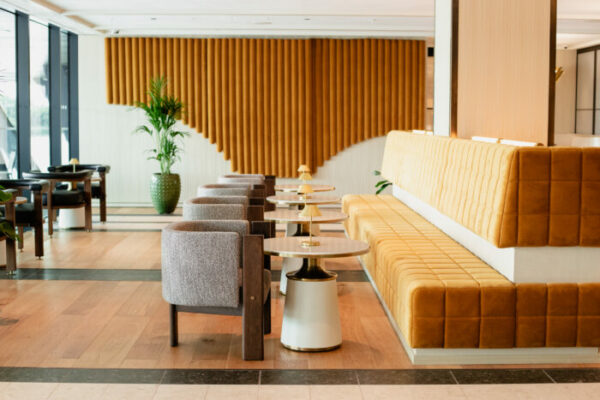
Can you tell us more about the vision for Fulham Pier?
It’s truly a multifaceted venue: there’s a hotel, spa, members’ club, Brasserie Constance with a Michelin-starred chef, public food halls designed to incubate new food brands, and a theatre and entertainment space. We wanted each space to feel distinct with its own identity, not a single branded look. And we consciously avoided tying everything back to the football club – no crests, no memorabilia. This is a destination in its own right.
How did you achieve that sense of individuality across the spaces?
We worked with three different interior design teams – one very local, Stuart Forbes Associates based here in Fulham, LRV in Barcelona and Dion & Arles in Paris. Each brought their own cultural perspective to the spaces, and that was important. They didn’t coordinate with each other, so you can feel that each area has a different design DNA. That individuality was intentional – we wanted contrast and personality.
And how did you keep everything feeling connected?
It’s about threading through values, not visual themes. We focused on being exceptional hosts, and creating experiences that feel closer and more personal. Whether you’re having a burger downstairs or three courses in the Brasserie, the experience should feel consistent – relaxed, special and unpretentious.
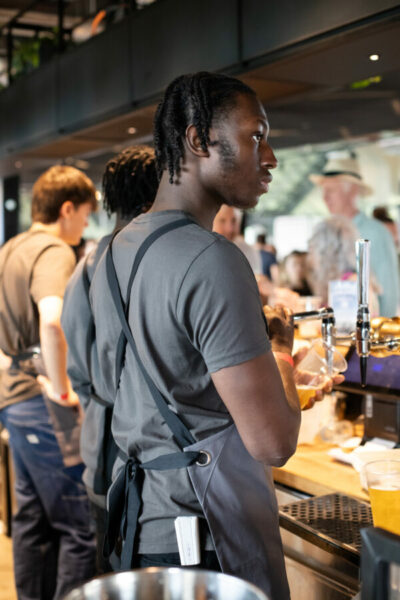
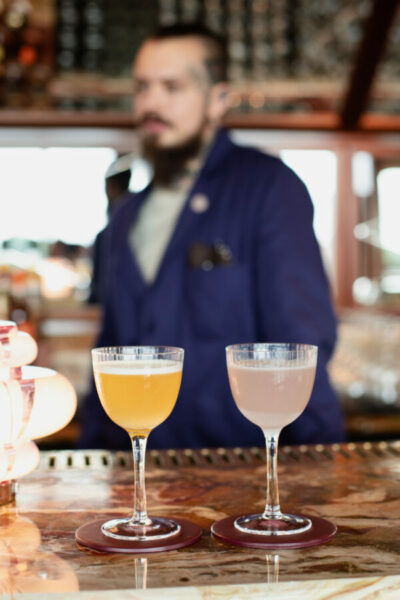
How did uniforms fit into that bigger picture?
Uniforms are one of the most intimidating parts of a project like this because people wear them every day. You’ve got to get it right. When you put that much care into finishes and the feel of a space, it has to carry through to what people wear. Uniforms shape how staff feel, how they move and how they behave – and that has a knock-on effect on the guest experience.
What did you want to achieve with the uniform designs?
Informality was key – even in the members’ club. We always said that space should feel like your cooler best friend’s apartment. The idea was aspirational but never intimidating. Better than your own place, but relaxed and comfortable enough for you to feel at home. We didn’t want the staff to feel overly formal, because that would affect how guests interact with the space.
What was it like working with Field Grey on the uniform design?
It was a really collaborative process. I’m quite into tailoring and construction, so I was involved from the start – sampling, reviewing, refining. The Field Grey team were incredibly patient. Because these brands didn’t exist yet, we didn’t have a strong sense of our own identity. We were always having to imagine who we would become. Field Grey helped us shape that.
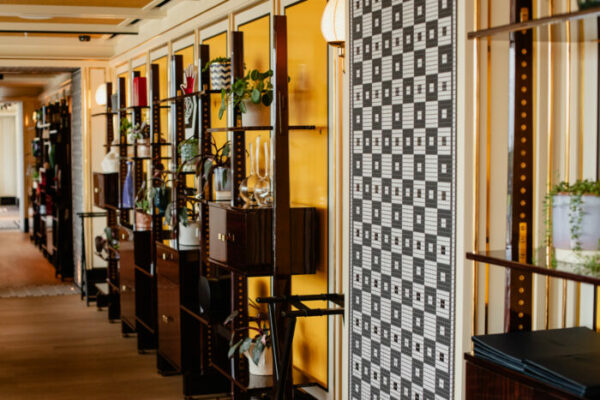
What do your teams think of the uniforms?
They’ve been really well received. The team look great, and the pieces are softening beautifully with wear – especially the heavier cottons in the members’ club. Those fabrics mould to the person wearing them and start to feel like your own.
What’s your favourite piece?
The workers’ jackets in the members’ club, Lighthouse Social. They’re not quite chore jackets – they’ve got a proper lapel, made in a kind of French cotton chambray. Structured but relaxed. We paired them with Readywear neckerchiefs and let staff wear them however they liked – as a pocket square, in their hair, tied around an arm. That personal styling makes a big difference.
When you walk through Fulham Pier now, what are you most proud of?
Seeing the staff take ownership of the spaces. You create something like this, then hand it over – and when you see people working in it, proud of it, calling it their own, that’s the best feeling.

